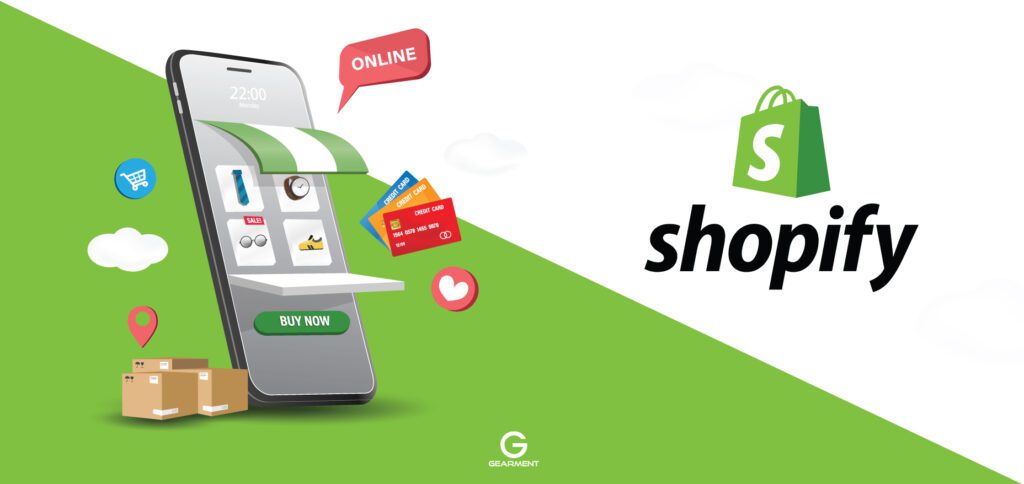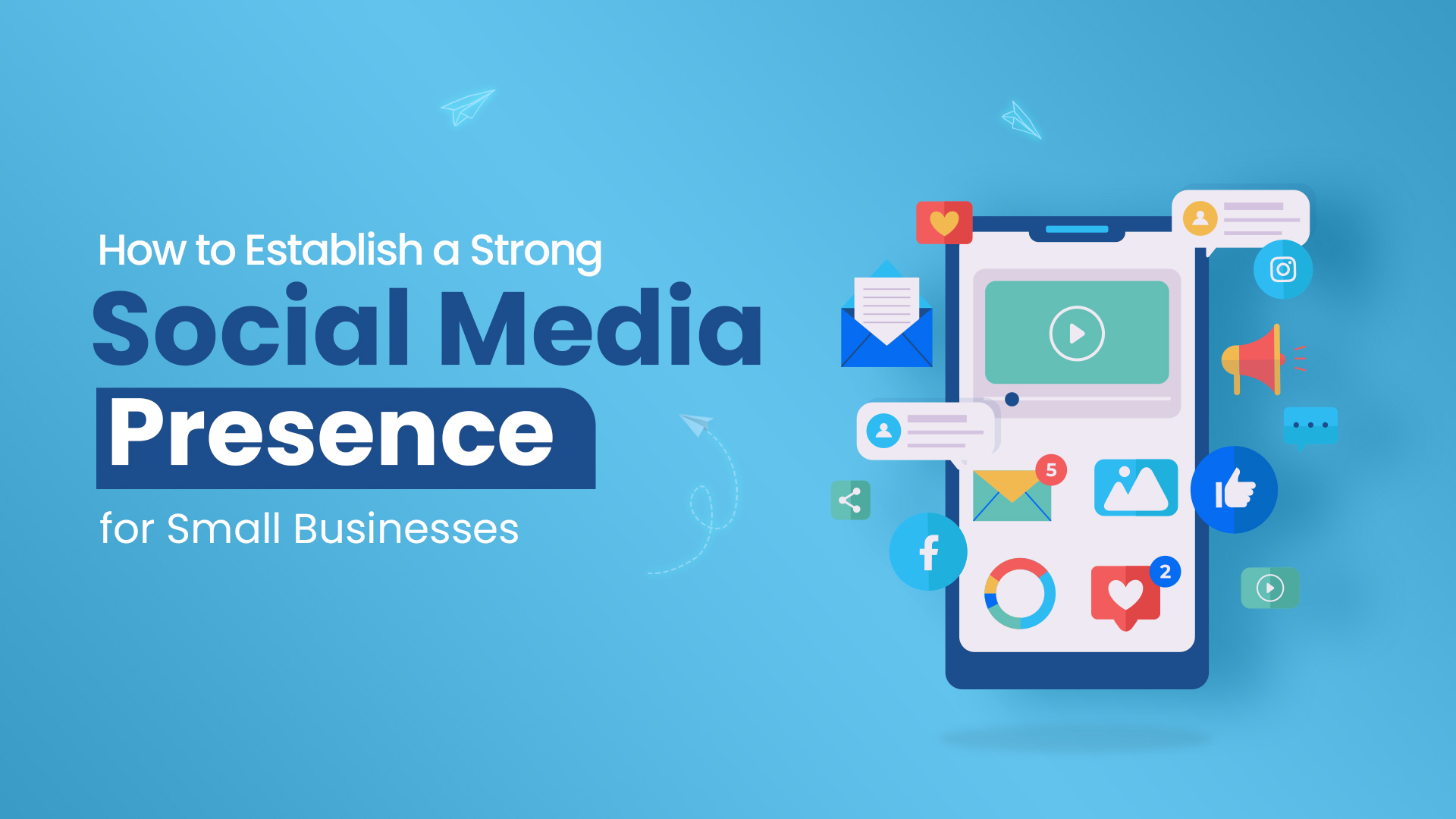Welcome to the exciting world of online business! If you’re eager to start a journey filled with endless possibilities and the chance for success, you’re in the right place. This complete guide will walk you through every step of setting up a thriving Shopify store, from choosing what you want to sell to growing your business for the long term.
Your online store is not just a website; it’s your way to start a business, be creative, and potentially make money independently. Whether you’ve done this before or you’re new to the idea of running an online store, the advice in this guide will help you understand the ever-changing world of online business and give you the tools to create a successful online store.
So, let’s get started and learn about the important things you need to do to create and grow a profitable Shopify store. Whether you’re passionate about a particular product, looking for financial freedom, or simply excited to share your unique offerings with the world, this guide will provide you with the information and strategies you need to succeed. Let’s begin your journey to online business success!
Step 1: Choosing Your Niche
You’re about to embark on your e-commerce journey, a path filled with endless possibilities and potential. But before you dive headfirst into setting up your Shopify store, there’s a crucial decision that will shape your entire venture – choosing your niche.
Why Does Your Niche Matter?
Your niche is the heartbeat of your online store. It’s not just a category; it’s your passion, your expertise, and your unique selling point. Here’s why getting it right is so essential:
Passion Fuels Success: Imagine running a store about something you’re passionate about. Your enthusiasm will shine through in your products, content, and customer interactions. When you love what you do, it shows, and customers are drawn to that authenticity.
Targeted Audience: A well-defined niche allows you to target a specific audience more effectively. It’s like fishing in a pond filled with fish that are hungry for exactly what you offer. You’re not trying to be everything to everyone, which can be overwhelming and dilute your brand identity.
Reduced Competition: In a specific niche, competition can be less fierce compared to broad markets. This gives you a better chance to establish yourself as an authority and build a loyal customer base.
Steps to Choose the Perfect Niche
Now that you understand the importance of your niche let’s dive into how to choose the perfect one:
- Passion and Knowledge: Start with your interests and expertise. What are you genuinely passionate about? Your enthusiasm will be your driving force during the ups and downs of entrepreneurship.
- Market Research: Investigate the market to understand its size and demand. Are there people actively looking for products or solutions within your niche? Use tools like Google Trends and keyword research to gauge interest.
- Competitor Analysis: Who are your competitors? Analyze their strengths and weaknesses. Are there gaps or opportunities they haven’t tapped into? This can be your entry point.
- Profitability: While passion is crucial, you also need to ensure your niche can be profitable. Consider the potential profit margins, pricing strategies, and recurring sales opportunities.
- Longevity: Is your niche a passing trend, or does it have long-term potential? Aim for a niche that can sustain your business over the years.
- Audience Engagement: Are there online communities, forums, or social media groups related to your niche? Engage with these platforms to understand your potential audience better.
- Legal and Ethical Considerations: Ensure your chosen niche complies with legal and ethical standards. Some niches have strict regulations that may affect your business operations.
Step 2: Setting Up Your Shopify Account
You’ve chosen your niche, and now it’s time to set the stage for your e-commerce adventure by creating your Shopify account. This step is your gateway to launching your online empire, and we’re here to make it as smooth and exciting as possible.
Why Shopify?
First, let’s address the “Why Shopify?” question. Shopify is not just a platform; it’s a powerhouse for e-commerce entrepreneurs. Here’s why it’s the go-to choice for countless successful online businesses:
User-Friendly: Shopify is incredibly user-friendly, making it accessible for both beginners and experienced e-commerce pros. You don’t need to be a tech genius to get started.
Customizable: With a wide range of themes and customization options, you can create a store that reflects your brand’s unique personality and style.
Secure and Reliable: Shopify takes security seriously, ensuring your customers’ data is safe. Plus, it boasts reliable hosting and 24/7 support to keep your store running smoothly.
Scalable: Whether you’re just starting or planning to grow into a mega-store, Shopify can scale with your business, offering the features you need at every stage.
Creating Your Shopify Account
Now, let’s get into the exciting part – creating your Shopify account:
- Sign Up: Visit Shopify’s website and click on the “Get Started” button. You’ll need to provide your email, password, and store name. Make sure your store name is memorable and reflects your niche.
- Choosing a Plan: Shopify offers various pricing plans to suit different business needs. Select the plan that aligns with your budget and requirements. Don’t worry; you can always upgrade as your business grows.
- Store Setup: Once you’ve chosen your plan, you’ll be prompted to enter some basic information about your business. This includes your physical address for tax purposes and your primary sales channel (online, in-person, or both).
- Customize Your Store: After completing the initial setup, you’ll be directed to your Shopify dashboard. Here, you can start customizing your store. Choose a theme that matches your brand and use the intuitive drag-and-drop builder to add and arrange elements on your homepage.
- Add Products: Begin populating your store with products. Each product listing should include high-quality images, detailed descriptions, and prices. You can also organize your products into categories for easy navigation.
- Configure Domain: While Shopify provides a free domain (e.g., yourstorename.myshopify.com), it’s a good idea to purchase a custom domain (e.g., www.yourstorename.com) for a more professional appearance. Shopify makes it easy to connect your custom domain.
- Set Up Payment Gateway: Shopify supports multiple payment gateways, including credit card processors, PayPal, and more. Configure your preferred payment methods to ensure a seamless shopping experience for your customers.
Step 3: Adding Products
Congratulations! You’ve set up your Shopify account, and now it’s time to breathe life into your online store by adding products that will captivate your customers. This step is where your vision and creativity come to life, as you transform your niche into tangible, irresistible offerings.
Crafting Irresistible Product Listings
Your product listings are the virtual aisles of your online store, and they need to be as inviting as the window displays of a high-end boutique. Here’s how to create product listings that make shoppers click that “Add to Cart” button:
- High-Quality Images: Visuals are everything online. Invest in professional-quality images that showcase your products from various angles. Use high-resolution photos with zoom capabilities so customers can examine every detail.
- Compelling Descriptions: Your product descriptions should tell a story. Highlight the benefits and features, but also evoke emotions. Explain how the product solves a problem or fulfills a desire. Use persuasive language and a clear, concise format.
- Pricing Strategy: Your pricing should reflect the value your product offers. Consider factors like production costs, competitor pricing, and perceived value. Be transparent about any discounts or promotions.
- Stock Availability: If your product is in limited supply, communicate this to create a sense of urgency. Conversely, if you have abundant stock, reassure customers they will take advantage of it.
- Variations and Options: If your product comes in different sizes, colors, or configurations, make it easy for customers to select their preferred option. Use dropdown menus or radio buttons for clarity.
- Shipping Information: Be upfront about shipping costs, delivery times, and tracking options. Customers appreciate transparency and knowing when to expect their orders.
- Customer Reviews and Ratings: Encourage customers to leave reviews and ratings. Positive feedback builds trust, and even negative reviews can be an opportunity to show your commitment to customer satisfaction.
Optimizing Product SEO
To ensure your products get found in online searches, optimize your product listings for SEO (Search Engine Optimization):
- Keyword Research: Identify relevant keywords related to your products and niche. Use tools like Google Keyword Planner to find high-traffic keywords with low competition.
- Title Optimization: Include your primary keyword in the product title. Keep it concise but descriptive, so it’s clear what the product is.
- Product Description: Naturally incorporate keywords into your product description. Avoid keyword stuffing; focus on providing valuable information.
- Alt Tags for Images: Add descriptive alt text to your product images, including relevant keywords. This helps improve accessibility and SEO.
Adding products to your Shopify store is where your e-commerce venture truly takes shape. By creating compelling product listings and optimizing for SEO, you’ll entice potential customers and increase your chances of success. Remember, each product you add is an opportunity to connect with your target audience, solve their problems, and leave a lasting impression. Get ready to see your virtual shelves filled with offerings that customers can’t resist!
Step 4: Marketing Strategies for Growth

Marketing is the lifeblood of your Shopify store. It’s not just about having a great product; it’s about getting the word out and connecting with your target audience. In this section, we’ll explore various strategies and tactics to drive traffic, boost conversions, and foster brand loyalty.
The best marketing doesn’t feel like marketing.
Search Engine Optimization (SEO):
Identify relevant keywords for product descriptions, blog posts, and meta descriptions.
Optimize product pages with titles, image alt text, and mobile-friendly design.
Maintain a niche-focused blog to establish authority.
Content Marketing:
Create engaging blog posts answering questions and showcasing products..
Utilize videos for product demos and behind-the-scenes content
Social Media Marketing:
Choose key platforms matching your target audience.
Maintain consistent branding.
Actively engage with followers and consider paid advertising.
Email Marketing:
Encourage newsletter sign-ups with incentives.
Segment your email list for personalized content.
Set up automated email sequences.
Influencer Marketing:
Collaborate with relevant influencers for sponsored posts and reviews.
Paid Advertising:
Use Google Ads for targeted keyword campaigns.
Utilize paid ads on platforms like Facebook and Instagram.
Incorporating these strategies into your marketing plan will drive traffic, enhance conversions, and build brand loyalty for your Shopify store. Marketing is an ongoing, creative effort for e-commerce success.
Step 5: Customer Engagement and Support
Customer engagement isn’t just a buzzword; it’s the cornerstone of a thriving e-commerce business. Here, we’ll delve into strategies for connecting with your audience, delivering exceptional customer support, and turning one-time buyers into lifelong brand advocates.
Personalized Shopping Experience
Every customer is unique, and tailoring their shopping experience can make a significant difference:
Customer Profiles: Create detailed customer profiles to understand their preferences, past purchases, and browsing behavior.
Product Recommendations: Use data-driven recommendations to suggest products relevant to each customer’s interests.
Interactive Customer Support
Accessible and helpful customer support is key to keeping your customers satisfied:
Live Chat: Implement a live chat feature on your website to provide instant assistance and answer questions in real time.
Chatbots: Use AI-powered chatbots to handle routine inquiries and guide customers to relevant resources.
Email Follow-Ups
Stay in touch with your customers after their purchase:
Order Confirmation: Send an immediate confirmation email with order details and tracking information.
Post-Purchase Surveys: Request feedback through surveys to understand what customers liked and areas where you can improve.
Loyalty Programs
Encourage repeat business and brand loyalty:
Rewards: Implement a loyalty program where customers earn points or discounts for repeat purchases.
Exclusive Offers: Offer exclusive discounts or early access to loyal customers.
Social Media Engagement
Maintain an active presence on social media to foster a sense of community:
Respond Promptly: Respond to comments and messages promptly and in a friendly manner.
User-Generated Content: Encourage customers to share their experiences with your products and feature their content on your social media channels.
Handling Customer Complaints
Dealing with complaints effectively can turn dissatisfied customers into loyal ones:
Empathy: Listen to the customer’s concerns, empathize with their situation, and offer a solution.
Timely Resolution: Resolve issues promptly and keep the customer informed throughout the process.
Feedback and Improvement
Continuously seek feedback and make improvements:
Surveys: Conduct regular surveys to understand customer satisfaction and areas for improvement.
Implement Suggestions: Act on customer feedback by making necessary changes to your products or services.
Humanize Your Brand
Let customers know there are real people behind your store:
About Us Page: Share your story and the values that drive your business.
Customer Stories: Showcase testimonials and success stories from happy customers.
By prioritizing customer engagement and support, you not only enhance the shopping experience but also create a loyal customer base that can drive sustained growth through positive word-of-mouth and repeat business. Remember, every interaction with a customer is an opportunity to strengthen your brand’s reputation and build lasting relationships.
Step 6: Analyzing Performance and Scaling
Analyzing your Shopify store’s performance is like having a compass to navigate the e-commerce landscape. It allows you to make informed decisions and steer your business towards growth. In this section, we’ll unravel the art of monitoring your store’s data and scaling your operations strategically.
The art of progress is to preserve order amid change and to preserve change amid order.
Tracking Key Metrics
To understand how your store is performing, you need to monitor key metrics:
Sales and Revenue: Keep a close eye on your sales figures, revenue, and profit margins.
Conversion Rate: Track the percentage of visitors who make a purchase.
Customer Acquisition Cost (CAC): Calculate how much it costs to acquire each customer.
Average Order Value (AOV): Measure the average amount spent by each customer in a single transaction.
Customer Retention Rate: Assess how many customers return for repeat purchases.
Utilizing Analytics Tools
Shopify offers robust analytics tools to help you make sense of your data:
Shopify Analytics: Use Shopify’s built-in analytics dashboard to monitor store performance, sales channels, and customer behavior.
Google Analytics: Integrate Google Analytics for more in-depth insights into website traffic and user behavior.
A/B Testing
Experimentation is the heart of optimization. Conduct A/B tests to refine your strategies:
Product Page Layout: Test different layouts, images, and descriptions to see what converts best.
Pricing: Experiment with pricing strategies to find the sweet spot for maximizing revenue.
Call-to-Action Buttons: Test variations of call-to-action buttons like “Buy Now” or “Add to Cart.”
Scaling Strategies
Once you’ve analyzed your performance and identified areas for improvement, it’s time to scale your business:
Diversify Product Range: Expand your product offerings to cater to a wider audience or enter new niches.
International Expansion: Consider selling to international markets to tap into a broader customer base.
Additional Sales Channels: Explore other sales channels like Amazon, eBay, or social media marketplaces.
Invest in Marketing: Allocate resources to scale your marketing efforts, including paid advertising and influencer partnerships.
Inventory Management
Efficient inventory management is vital for scaling:
Stock Levels: Ensure you have adequate stock to meet demand without overstocking.
Dropshipping: Consider dropshipping to expand your product range without the need for additional inventory.
Supplier Relationships: Cultivate strong relationships with suppliers to secure better deals and reliable sources.
Customer Feedback and Refinement
Always listen to your customers and adapt accordingly:
Feedback Loop: Act on customer feedback to improve product quality, customer service, and overall shopping experience.
Refine Marketing: Continuously refine your marketing strategies based on customer behavior and preferences.
Set Realistic Goals
Finally, set clear and realistic goals for your scaling efforts:
Short-Term Goals: Define what you aim to achieve in the next few months, such as increasing sales by a certain percentage.
Long-Term Vision: Outline your ultimate vision for the business and the steps needed to get there.
Remember, scaling is an iterative process. Continuously assess your performance, refine your strategies, and adapt to changing market conditions. As you grow, maintain the agility to pivot and embrace new opportunities that arise.
Setting up a successful Shopify store requires careful planning, dedication, and ongoing effort. By following this comprehensive guide, you’ll be well-equipped to create a thriving e-commerce business that not only generates revenue but also provides value to your customers. Remember that success in e-commerce often comes from continuous learning and adaptation to the ever-evolving online landscape.
Good luck with your Shopify journey!









